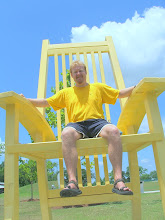Summary: Discovering original interpretations of primary source documents through a live-animation performance.
Objectives
The student will:
Select and analyze a primary source document
In this lesson students will use the staging techniques of visual art, object theater, drama, music, film, modeling and performance to present an original interpretation of a primary source document.
- Write an original narrative based on evidence from a primary source document.
- Use puppets, models, and story telling techniques to stage a narrative based on a primary source document.
Materials
Live-animation materials: dolls and other miniature items that can be used in a small scale theater production.
Projection devices: Here are some suggested ways students can present their live-animation performance to an audience.
Elmo projector
Camcorder and tripod (shoestring tip: an old VCR camera can be directly connected to a television or LCD projector and then be used to present the students "live action".
Overhead projector
Activity: What is a primary source?
1. Project or write the following definition:
Primary source - source created by people who actually saw or participated in an event and recorded that event or their reactions to it immediately after the event.
2. Discuss with students how our perception of history is shaped by primary documents.
Activity: An introduction to live-animation theater
Students watch the following video clip from The Great War created by members of the theater troupe Hotel Modern.
1. Pre-viewing questions
Before showing the video clip ask students to ask themselves the following questions:
What is the narrator reading in the background?
Where in the clip is the "suspension of disbelief" created? When is this suspension destroyed?
2. Show the video clip (http://www.youtube.com/watch?v=zRbe2GDjZRI)
3. After viewing the clip return to the pre-viewing questions and ask students to share their answers with their peers.
Activity: An interview with the members of Hotel Modern
In this activity students will watch video clips from an interview with the members of Hotel Modern.
In the first clip Herman Helle explains how he relies on the audience's imagination during the performance of The Great War. In the second clip members of the troupe explain how they conduct research when creating their performances. The third clip presents a discussion with the troupe on how they use the suspension of disbelief in their performances.
IMAGINATION
RESEARCH
THE SUSPENSION OF DISBELIEF
Activity: Creation and presentation of a live-animation performance based on a primary source document.
Task: Students plan, stage, and present a live-action performance based on the text in a primary source document. Divide students into groups of three or four.
1. Selection of a primary source document
Students identify primary source documents from either a list of documents preselected by the teacher or they use the Internet to make their own selection.
Tip: Letters and diaries work the best for creating a live-action performance.
2. Instruct students to plan, write, and stage a live-animation performance that illustrates the ideas and concepts presented in their primary source document.
3. Assign or allow members of each group to choose the following group roles: narrator, sound effects, actor #1, and actor #2.
Station #1: The Exposition
Each group of students uses maps, charts, and objects to present the setting, time, historical context, and main characters of the work.
Example: In their presentation of "The Great War" the theater troupe Hotel Modern used an Elmo projector to project a map of Europe onto the video screen. The troupe members maneuvered toy cannons and ships around the map to show the buildup of the military in European nations on the eve of the first world war. Troupe members also used cigars and handshakes to provide a more subjective comment on how these alliances between the European nations were created during the lead up to the first world war.
Station #2: Live-animation presentation illustration of the narrative.


No comments:
Post a Comment